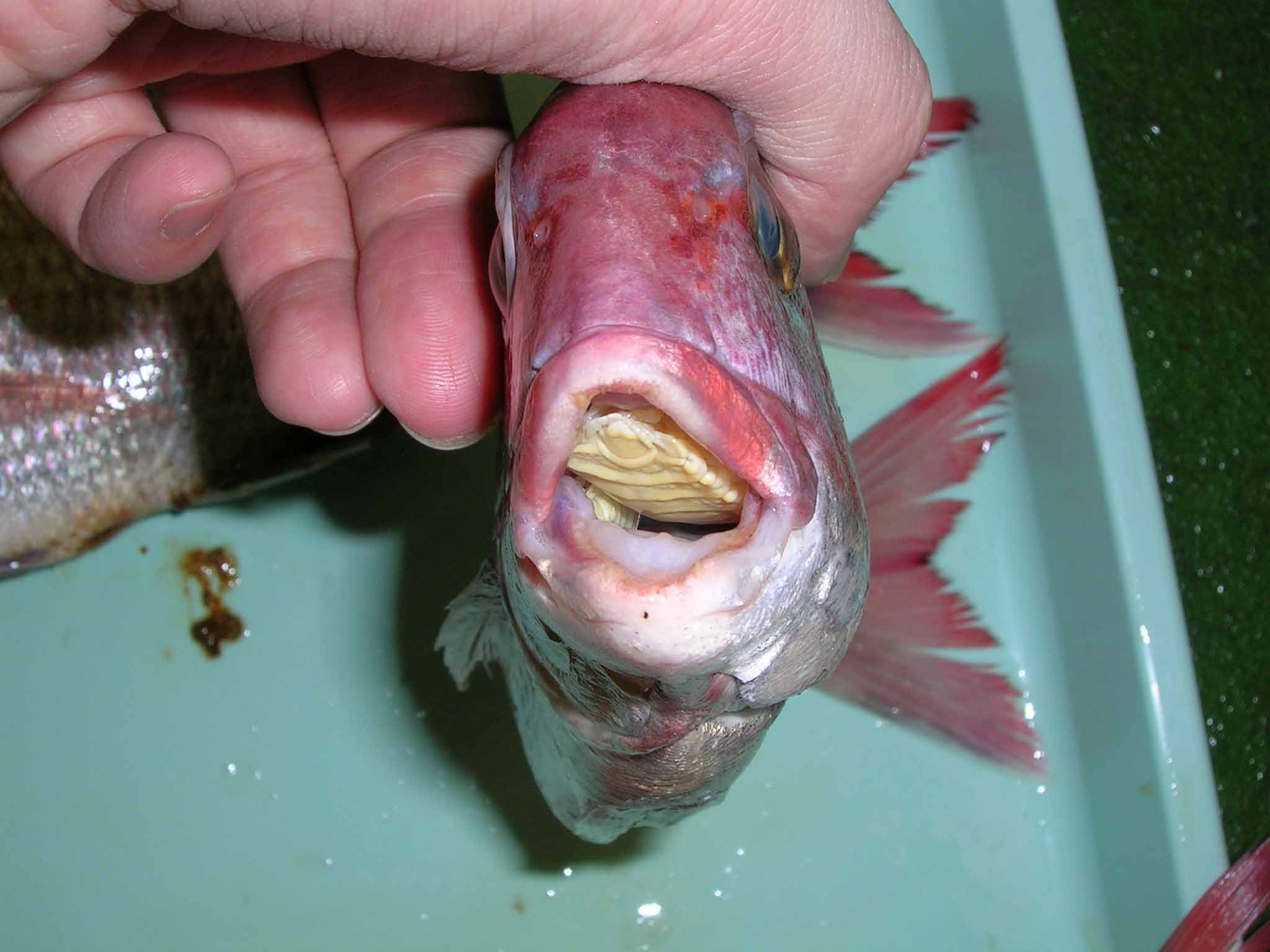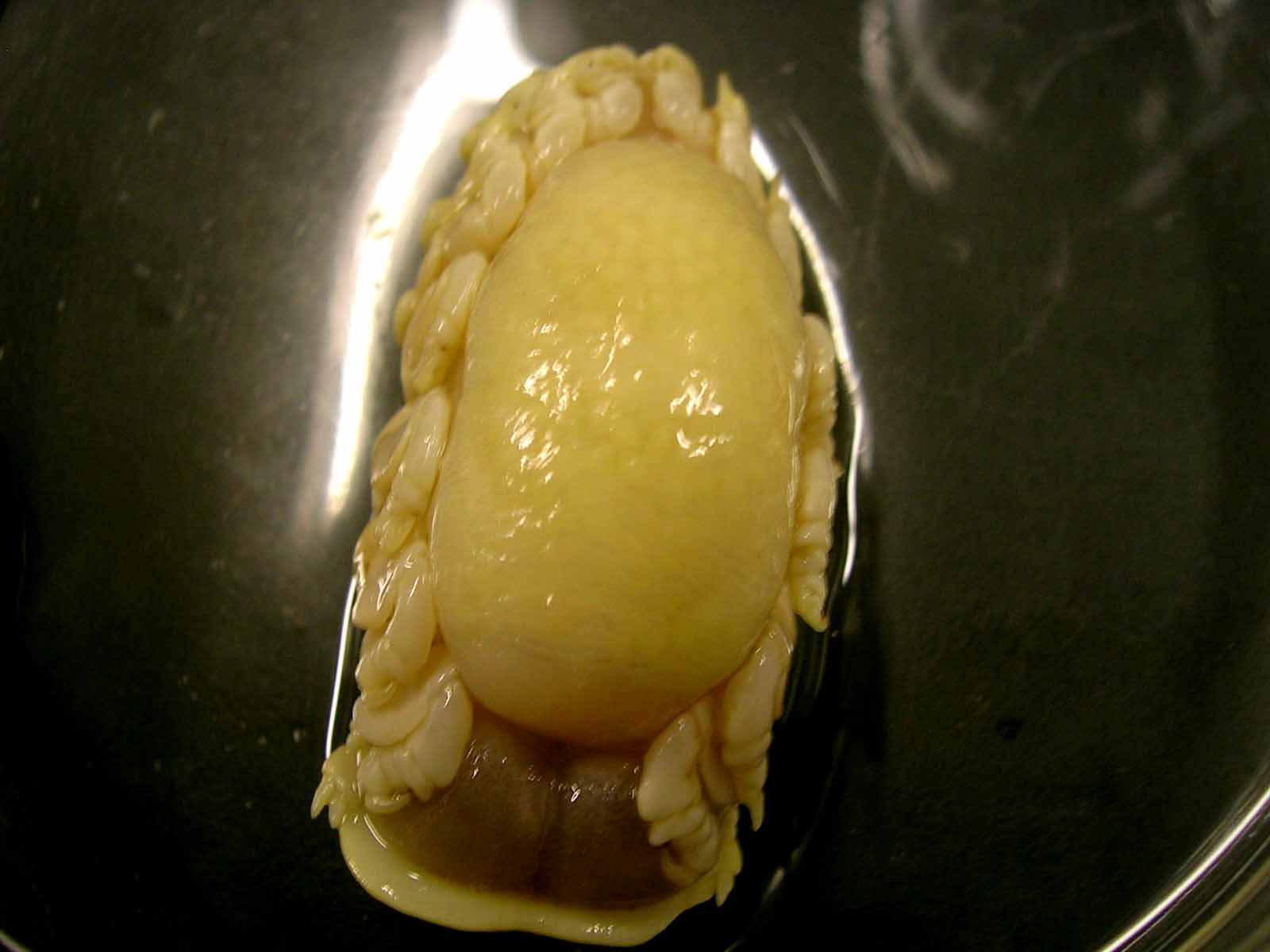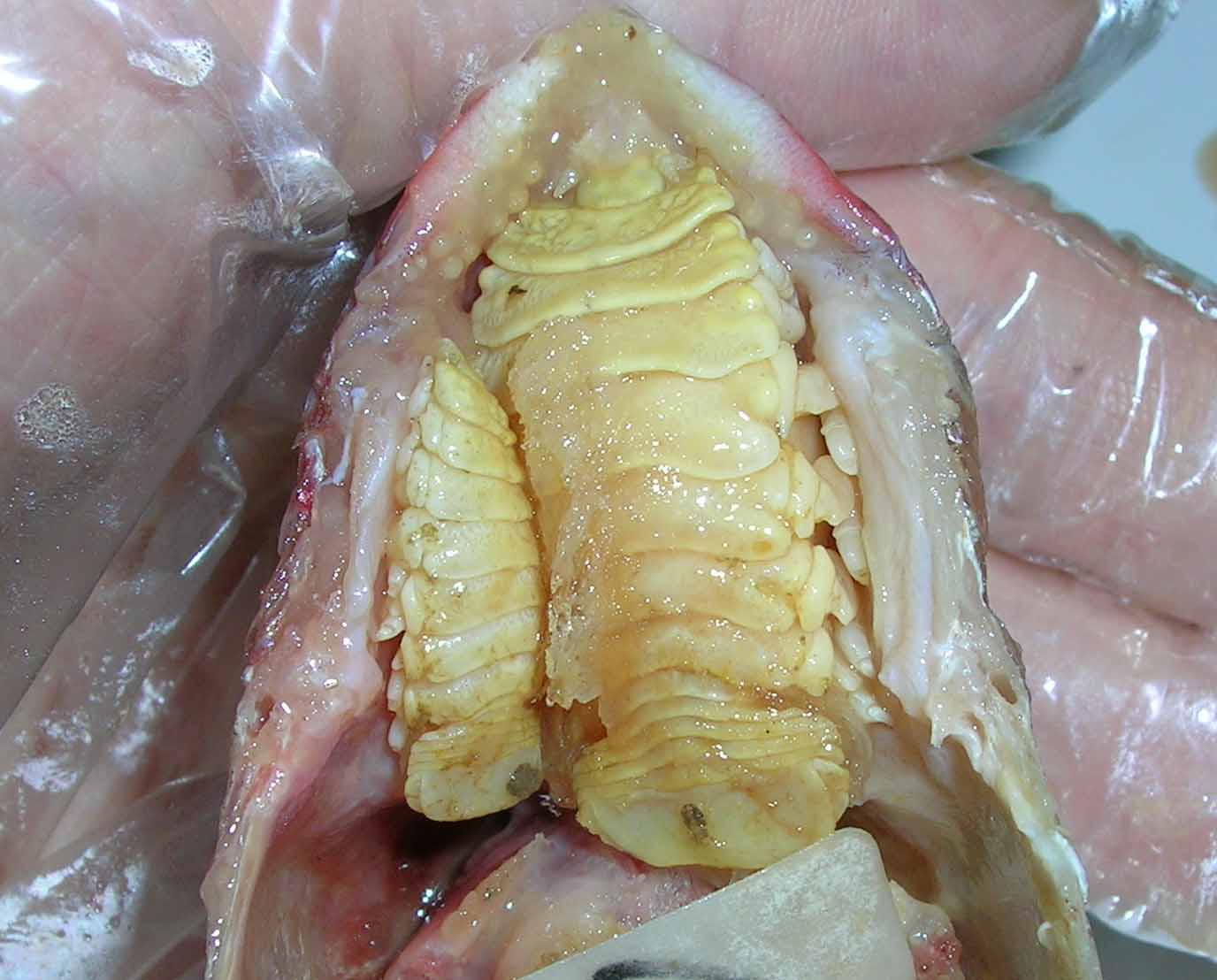
| Parasite | Rhexanella verrucosa |
|---|---|
| Taxonomy | Arthropoda, Malacostraca, Isopoda |
| Host | Red sea bream (Pagrus major) |
| Infection site | Buccal cavity |
| Clinical sign | A pair of parasites (male and female) is observed in the buccal cavity (Fig. 1 and 2). |
| Parasitology | This parasite parasitizes the buccal cavity of red sea bream. Female and male are 3-5 cm and 1-1.5 cm in length, respectively. A female has a large brood chamber in the ventral side (Fig. 3). The parasite feeds on the host’s tissues proliferated by the stimulus of the parasite. In early stage, each parasite possesses both a testis and an ovary. One parasite loses the testis and differentiates to a female, while the other becomes a male. Although the male keeps the two gonads, its ovary does not mature (Sanada, 1941). |
| Pathology | Infection is not fatal to host fish. However, it is possible that feeding activity is adversely affected, because the mouth is fully occupied by the parasite and the jaw is deformed. |
| Health hazard | Since this parasite is not infectious to human, it is harmless in food hygiene. |
| Diagnosis | The parasite is readily observed in the buccal cavity. |
| Other information | This parasite has been known to infect wild fish since a long time ago. It is reported in the cultured fish for rare occasion. There are no effective control methods for this disease. |
| References | Sanada, M. (1941): On sexuality in Cymothoidae, Isopoda I Rexana verrucosa Schoedte & Meinert parasitic in the buccal cavity of the porgy, Pagrosomus major (Temminck & Schlegel). J. Sci. Hiroshima Univ. Ser. B, Div. 1, 9, 209-217. |

Fig. 1. Rhexanella parasitizing the upper jaw of red sea bream.
Note the deformity of the jaw.
(Photos by T. Otani)


Fig. 3. Ventral view of matured female of R. verrucosa.
Fig. 2. Male (left) and female (right) of R. verrucosa.